Review: HTC One max
Menus
The max runs Android 4.3 Jelly Bean and the HTC Sense 5.5 user skin on top of it. HTC has long supplanted Google's vision for Android with its own. The max's Sense user interface is more or less identical to that of the One and One mini, though it offers some usability improvements (mostly in BlinkFeed) when compared to the devices released earlier this year.
The lock screen includes customizable shortcuts that populate a dock at the bottom of the screen. If you set a lock code, the camera will still open, but you'll need to put the code in to go from the lock screen to any other shortcut/app. In addition to the shortcuts, the lock screen can be loaded with content if you want it to. For example, it can be set to show your photos, provide calendar and messaging details, or contain the media player controls. The weather and time are always visible on the lock screen.
The fingerprint scanner, on the back, can be used to unlock the One max. If you choose to do so, you'll have to swipe your finger before you can access anything. If the fingerprint scanner fails, you can set a back-up password. You have to press the screen lock button to wake the max up before you can use the fingerprint sensor, though, which is an extra step.
There are essentially three home screen panels. By default, the left-most screen is BlinkFeed (more on that below). You can add more home screen panels and anchor any of them as the Home panel (i.e., the one in the middle). The BlinkFeed panel cannot be removed, it persists as at least one of the home screen panels. The other panels can be populated with apps, widgets, and shortcuts in any way that you might wish. Press-and-hold on the home screen or in the main app menu, and the necessary tools pop up to make it your own.
The main app menu is arranged somewhat differently than on other Android devices. For example, out of the box, the app menu is set to show only a few apps, and they are arranged in an order that HTC thinks you might prefer. There are only 9 apps on each page, with lots of blank space around them. Thankfully, you can change it so that as many as 20 apps appear on each menu screen, and arrange them in alphabetical, recent, or custom configurations. Apps can also be hidden from the app menu.
The main system settings behave more or less like stock Android, though HTC has dressed them up with its own fonts and color palette. The max's settings let users adjust and control most aspects of the hardware and software.
One thing that's a bit disappointing is the lack of multitasking. Even Samsung's 5-inch Galaxy S4 can operate in split-screen mode and run two apps at once. Why can't the One max? There are no cool or innovative multitasking tools that take advantage of the expanded real estate and that's a shame. If ever there was a device begging for a split-screen mode, it is the max.
It terms of performance, I never found the max's processor gasping for breath. The max has a quad-core Qualcomm Snapdragon 600 processor, with each core clocked at 1.7GHz. The processor is paired with 2GB of RAM. The Snapdragon 600 didn't have any trouble conquering task after task. I ran it through a battery of multitasking tests and it passed with flying colors. If you're worried that the max doesn't have a Snapdragon 800 under the hood, don't be. The max went toe-to-toe with the One, Note 3, and other phones without blinking.
BlinkFeed
BlinkFeed is a social news reader that links with your Facebook and Twitter accounts and also pulls down articles from a handful of web sites. It is all presented in a digital magazine format that's easy to read. Even better, HTC has updated the app since it first debuted and it is easier than ever to manage. For starters, it will automatically setup feeds based in your Facebook Likes. It also adds compatibility with Instagram and Google+.
The app itself offers controls over how often it refreshes the content, but the curated selection of sites from which it will pull that content remains very limited. There are just a few web sites that people will recognize (AP, Reuters, HuffPo, ESPN, CNET, and so on). Beyond these sites, there are broad categories (Automobiles, Gaming, Music, Sports) to which you can subscribe. These categories offer a more diverse array of stories that are culled from random sources. If you don't mind doing a little legwork, you can add your own content to BlinkFeed via RSS. You need to go off and find the appropriate link in your own, though, which isn't very user friendly. Further, you can choose to download additional "editions" of BlinkFeed from other countries. These give you access to more curated content if that's what you're looking for.
Only four stories appear on each page in BlinkFeed — even with the max's huge display. When you want to see other pages, rather than glide up and down via infinite scrolling, you have to jump full pages.
My favorite way to take advantage of BlinkFeed is to completely ignore the third-party news content and just use it to peruse Twitter, Facebook, Flickr, and Instagram. You can also post directly to these social networks from within BlinkFeed.
At the end of the day, however, I don't use BlinkFeed at all. I prefer Flipboard, which does much the same thing and offers way, way more options. Further, Flipboard doesn't hijack one of the home screen panels.
Calls and Contacts
The max's calling and contact apps are identical to those on the One and One mini. The phone app is straightforward to use. The default view is whichever section of the app you used last. There are three tabs: call history, dial pad, and favorites. The tabs can be edited if you wish (you can rearrange them or substitute in several other options). The dial pad is easy to use, or you can switch it to show a keyboard so you can type the name of a contact rather than a number. In-call options run the norm, including adding a line, send to speaker/bluetooth, mute, and so on. It would be nice if the max made it easier to dial phone numbers one-handed, through, by perhaps pushing the phone dialer into the lower right or lower left corner like on the Galaxy Note 3.
The contact app does a great job of pulling in social networking details, and lets you sort between your various contact sources (phone, SIM card, Facebook, Twitter, etc.) with a drop-down tab. When scrolling through the full contact database, the app shows you the most recent social network status update from each contact, be it a Facebook post or Tweet. It does a great job of porting over profile images.
Together, the phone and contacts apps work well together and offer a lot of shortcuts between the two.
Messaging
HTC's take on the SMS app is decent, though it's not perfect. It organizes all messages into threads, as expected. The app places a blue bar to the left of each thread that contains unread messages. It's not intuitive at first, but you get used to it after a few days. Your messages float on a gray background, while those with whom you're chatting are outlined in white. It makes it easier to see which side of the conversation you're looking at. The app also has some powerful tools for saving and/or backing up conversations. At the end of the day, though, I prefer the stock Android text messaging app.
All the rest of the max's messaging tools are those designed by Google. They work/function the same as they do on every other Android handset.
One major complaint: the keyboard. With a screen as big as the max's, there's no reason why HTC couldn't add a row to the software keyboard for numbers. Samsung added numbers to the Note series' keyboards, HTC could (should!) have added a row for numbers on the max.


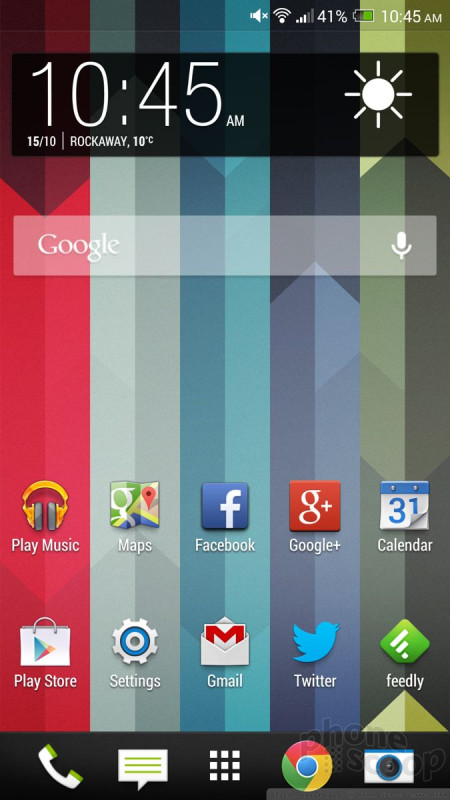






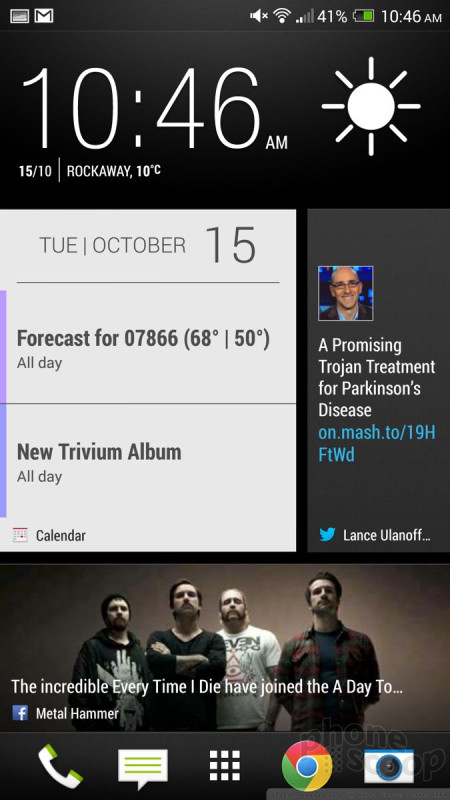







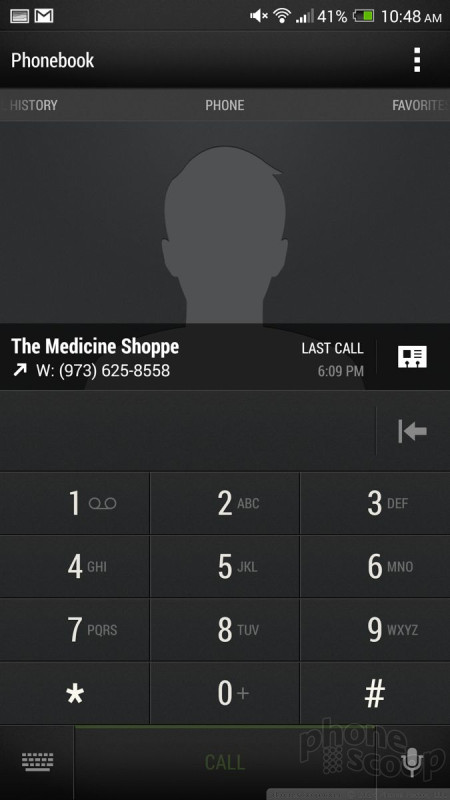



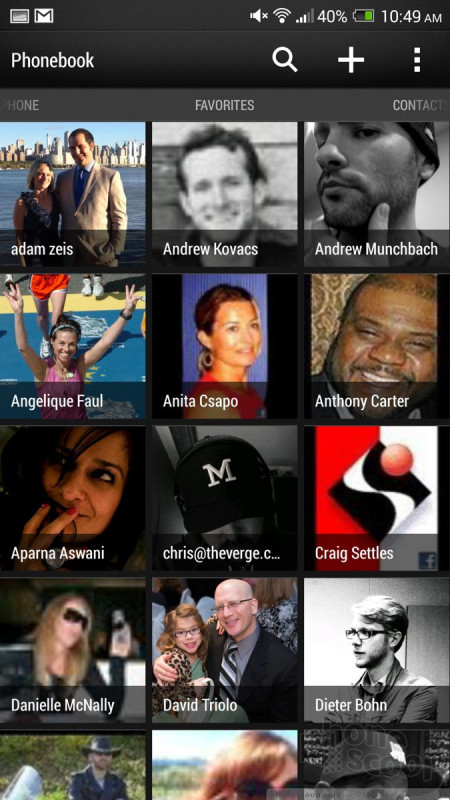











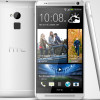 HTC Debuts the One Max with 5.9-Inch Screen and Fingerprint Scanner
HTC Debuts the One Max with 5.9-Inch Screen and Fingerprint Scanner
 HTC One max (CDMA)
HTC One max (CDMA)



